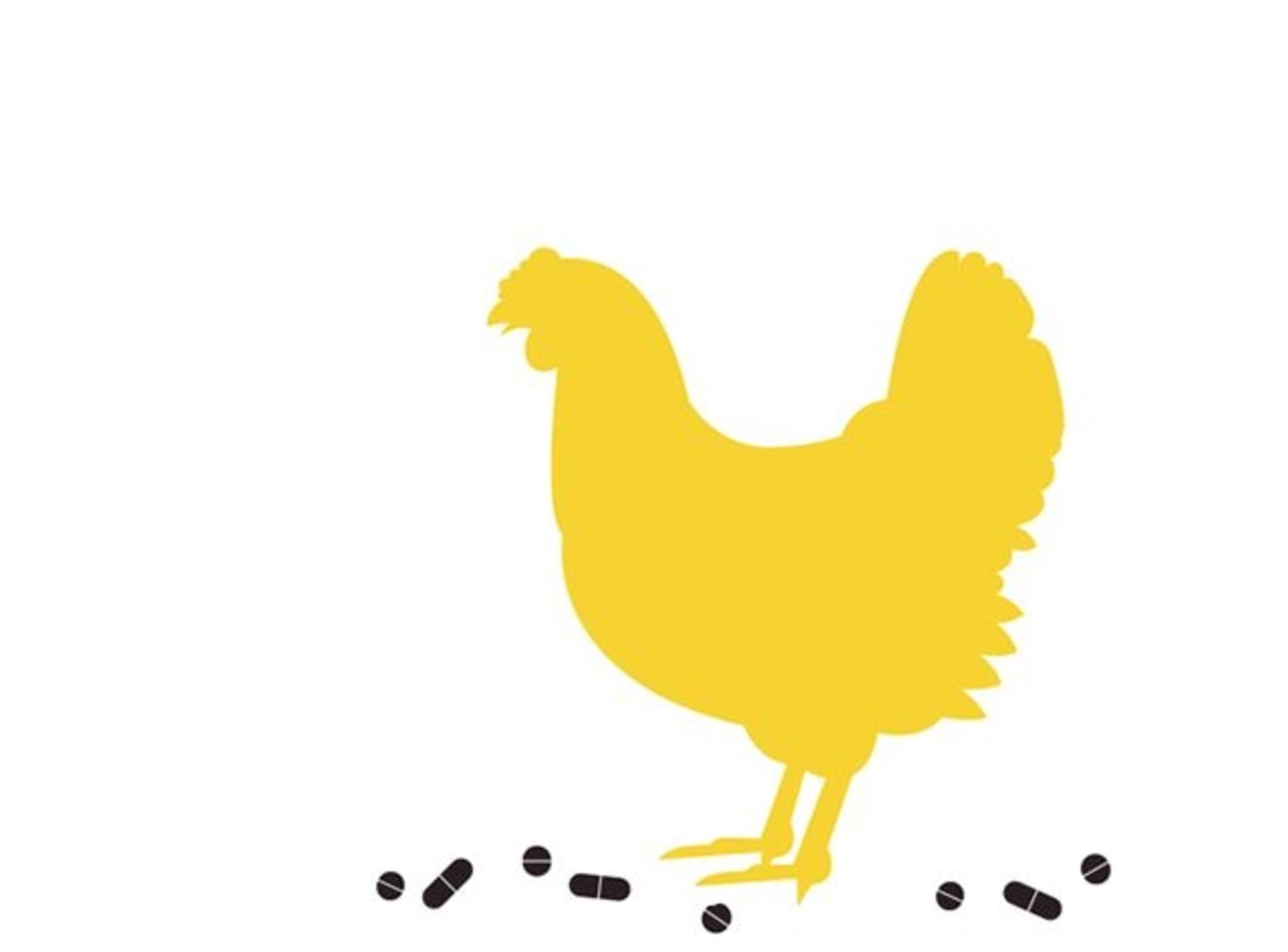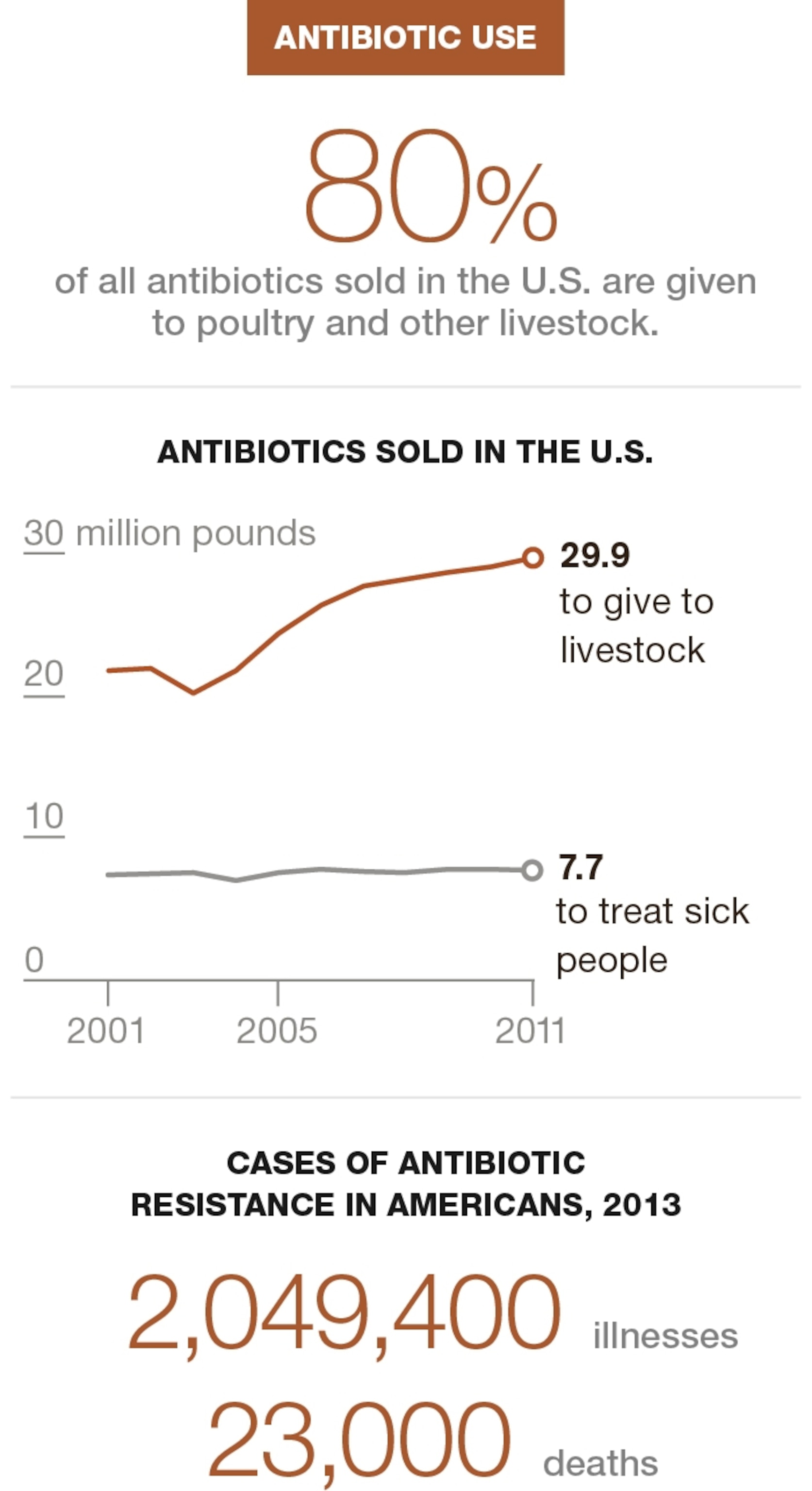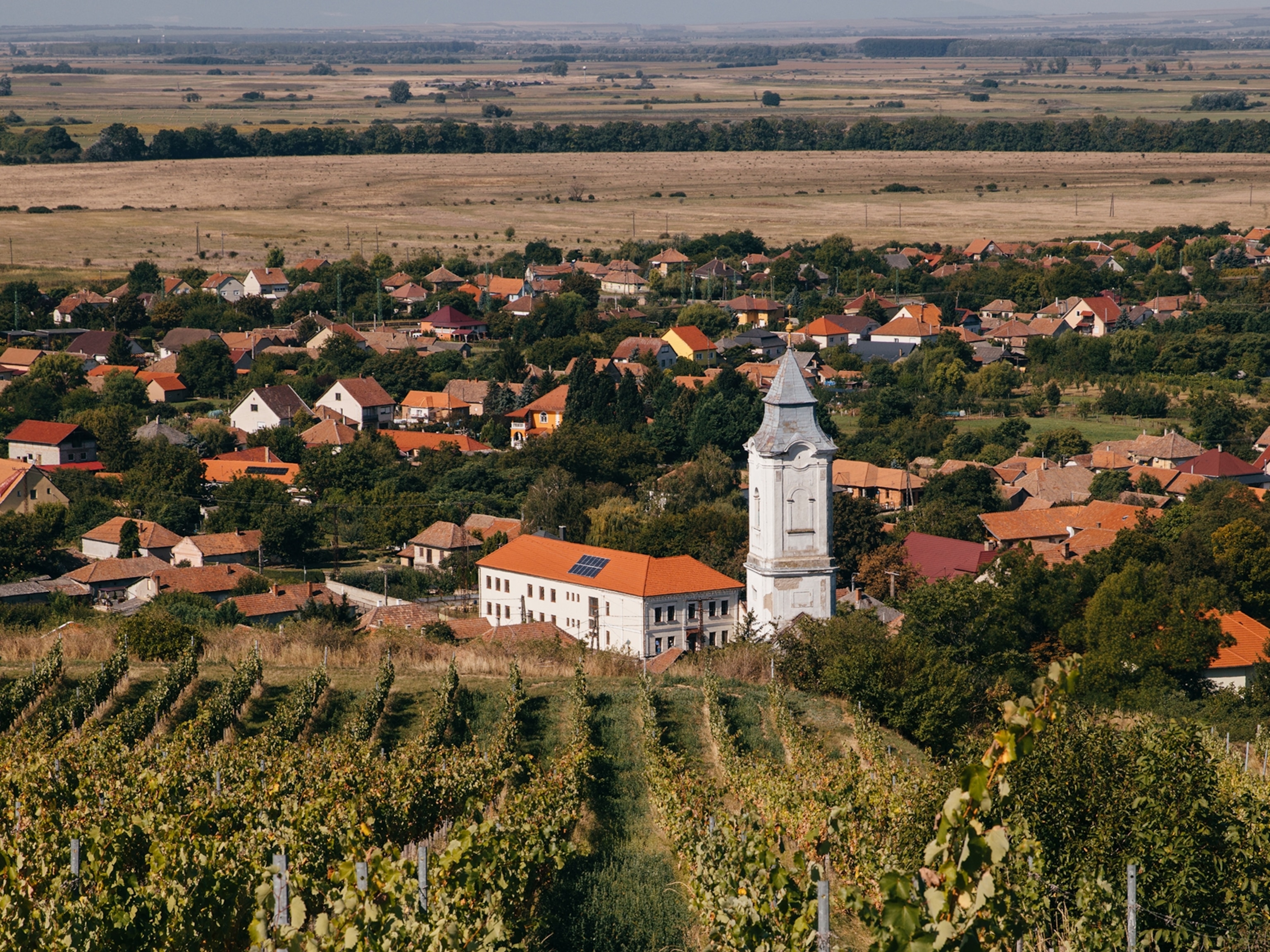
Should We Continue to Feed Antibiotics to Livestock?
Currently 80 percent of all antibiotics sold in the U.S. are given to poultry and livestock.
Since the 1950s farmers have fed antibiotic growth promoters (AGPs) to livestock. Overusing these substances can create superbugs, pathogens that are resistant to multiple drugs and could be passed along to humans. Mindful of that, companies such as Perdue Farms have stopped using the drugs to make chickens gain weight faster.
Since Denmark banned AGPs in the 1990s, the major pork exporter says it's producing more pigs—and the animals get fewer diseases. Says Centers for Disease Control and Prevention epidemiologist Tom Chiller, "Antibiotics are miracle drugs that should only be used to treat diseases."


Interested in food policy? Get the latest news at natgeofood.com.





